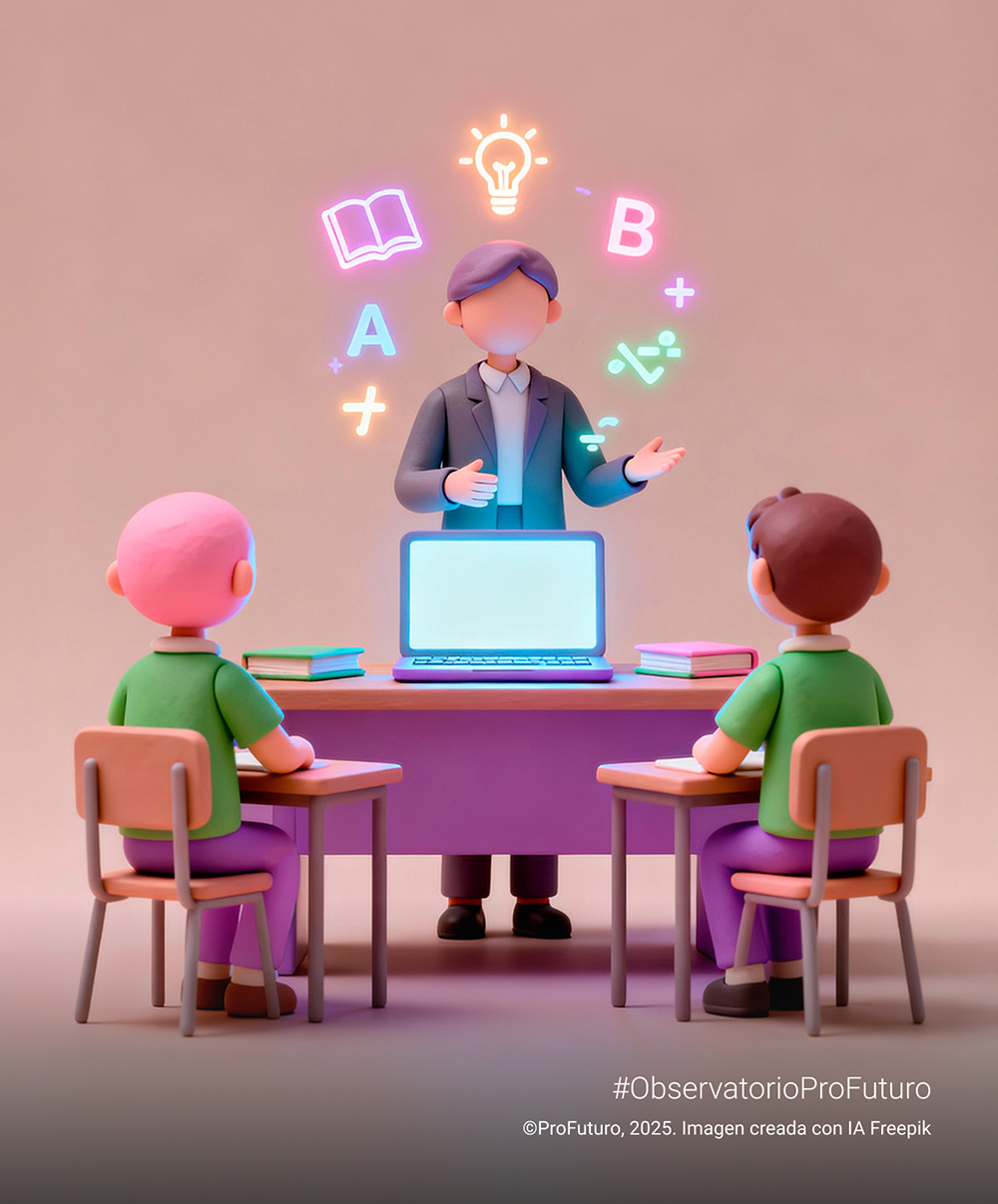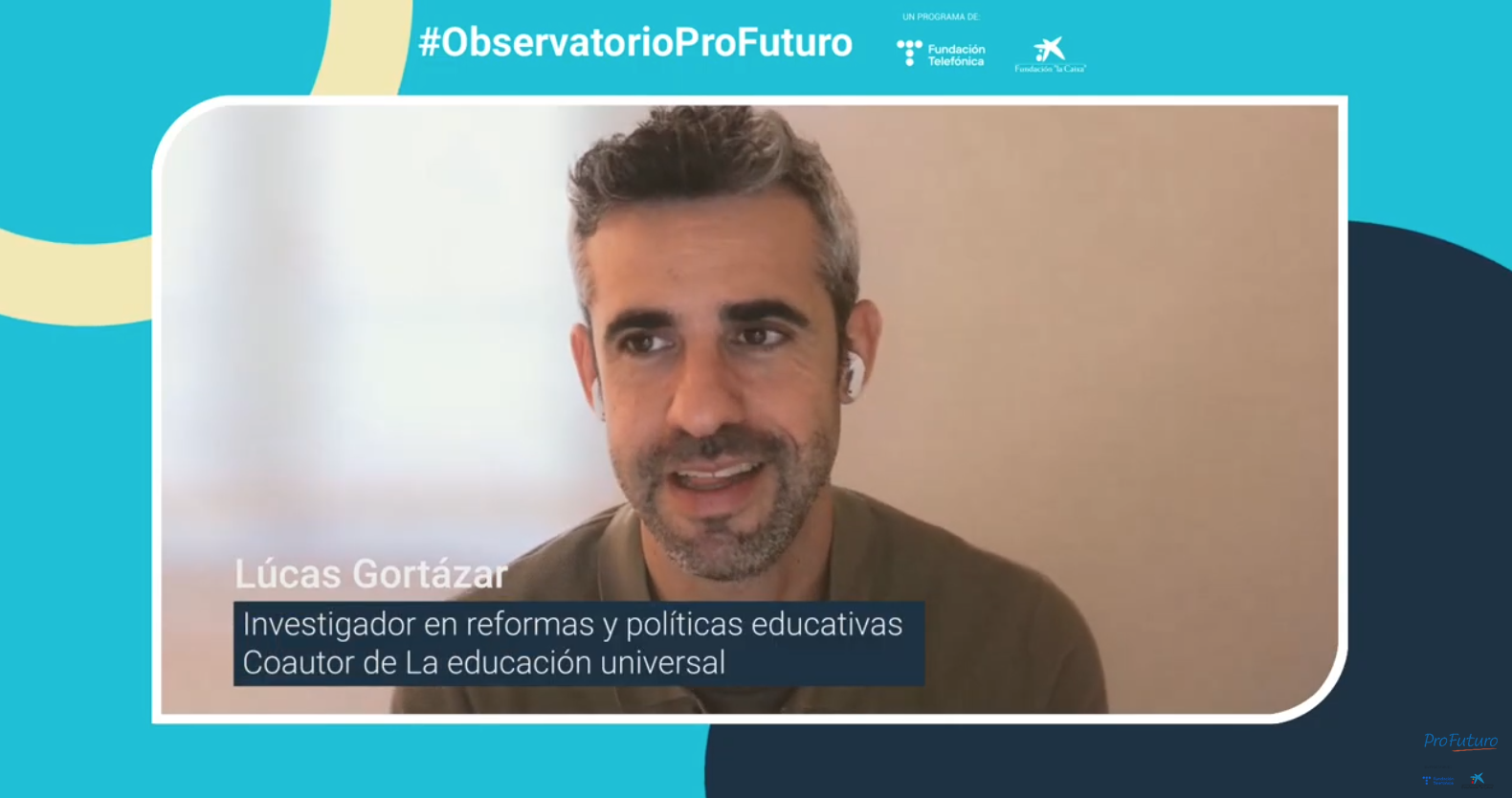Few recent transformations have raised as many expectations as educational digitalization. In just two decades, school systems have invested millions in equipping classrooms with interactive screens, tablets, and online platforms. We were promised an educational revolution: more autonomy, more motivation, more learning. However, results remain uneven. International reports show modest progress, and inequalities, far from diminishing, are reconfigured into new forms of digital exclusion.

The OECD, which usually proceeds with caution in this type of debate, decided to look at the issue under the lens of evidence. The result is Key findings and integration strategies on the impact of digital technologies on students’ learning, a review of more than 350 empirical studies and 25 meta-analyses on the impact of technology on learning. Its conclusion—that technology can help but does not teach by itself—offers scientific support to an intuition universally recognized by teachers.
Positive effects do exist: between 0.25 and 0.35 standard deviations, equivalent to three to five additional months of academic progress. But they only appear when technology is integrated into a structured pedagogy, with teacher support and defined learning objectives. In the absence of these factors, results tend to be neutral or even negative.
The report also warns that the digital divide has changed its face: it is no longer about access to devices, but about the competence to use them meaningfully. As one of its passages summarizes: “Technologies amplify the strengths of educational systems, but also their weaknesses.”
These conclusions could be summarized in the following maxim: digitalization does not replace pedagogy; it puts it to the test.
Where Technology Does Improve Learning
Technology works—but only when made to work. That could be the briefest summary of the OECD report’s positive findings. Far from maximalist narratives, the document offers a precise map of where and how digital tools truly contribute to learning. The constant is this: the best results occur when technology expands pedagogical action, not when it replaces it.
Mathematics: Visualizing the Abstract
In mathematics, the benefits are consistent. Dynamic geometry programs such as GeoGebra or Cabri allow students to represent spatial relationships that previously could only be imagined. According to this meta-analysis included in the OECD review, these tools increase average performance by 0.32 standard deviations. But the nuance matters: effects are significantly greater when teachers use the software to explore concepts, not to mechanize exercises. Visualization and manipulation foster understanding, as long as they are accompanied by guided reasoning and discussion.
Science: Experimenting With the Invisible
In science, digital resources make it possible to access phenomena that a traditional classroom cannot show. Virtual labs, augmented reality, or interactive simulations help students observe complex processes (such as a chemical reaction, the movement of a planet, or the dynamics of an ecosystem) without the limitations of time or physical materials. This meta-analysis confirms improvements in conceptual understanding and motivation, though it warns that excess visual stimuli can cause cognitive overload when activities lack structure. In this area, technology expands the field of observation, but meaning comes from teacher guidance.
Reading and Literacy: Adaptive Support
There is also clear progress in early reading and digital literacy. Programs such as GraphoGame or Headsprout (analyzed by Richardson and Lyytinen (2014) and Kyle et al. (2022)) show improvements in phonological recognition and vocabulary when used adaptively and with immediate feedback. In early-learning or multilingual contexts, technology can compensate for limited human resources, provided there is pedagogical monitoring.
Transversal Competencies: Collaboration and Self-Regulation
The report also identifies an emerging effect: well-designed digital environments strengthen collaboration and self-regulated learning. The meta-analyses by Sung et al. (2016) and Scherer et al. (2019), cited by the OECD, show that platforms combining cooperative work, automated feedback, and spaces for individual reflection achieve sustained improvements in motivation, perseverance, and self-regulation. The effects, although moderate (around 0.25 standard deviations), are consistent at various educational levels. More than a medium for learning with technology, these environments function as spaces where students learn how to learn, integrating autonomy and cooperation into a single pedagogical framework.
Overall, the evidence is clear: technology enhances learning when it serves as a means to better understand, represent, or communicate—not as an end in itself. The determining factor is not technical sophistication but the pedagogical purpose guiding its use.
When Technology Does Not Teach
If the OECD report debunks anything, it is technological determinism: the belief that introducing devices is enough to improve results. Evidence shows that technology used without pedagogical purpose not only fails to add value—it can produce counterproductive effects.
The Illusion of Substitution
For years, the narrative of the “school of the future” suggested that technology could replace the teacher. The pandemic seemed to confirm this: millions of students connected to virtual platforms, recorded lessons, algorithms correcting exercises. But subsequent data disproved it. According to the OECD and national assessments such as PISA 2022, unguided remote learning produced losses equivalent to between half and a full academic year, especially among students with less autonomy and cultural capital.
As the OECD publication summarizes: “Technologies amplify the strengths of education systems, but also their weaknesses.” In other words: where there is good pedagogy, digitalization enhances it; where it is lacking, it worsens it.
Overload and Distraction
Another danger involves cognitive overload. Digital environments present more stimuli than the mind can process: windows, links, colors, animations. The meta-analysis by Makransky and Petersen (2021) on virtual reality shows that excessive visual elements reduce retention and knowledge transfer. The same occurs with on-screen reading: Delgado et al. (2018) found that deep comprehension is lower than on paper, except when self-regulation strategies are taught. Summarizing in one phrase: technology can capture attention, but does not always focus it.
The New Digital Divide
Access to devices is no longer the main issue: inequality is in usage. PISA Digital Literacy (2022) data show gaps of up to 80 points between students of different socioeconomic levels in digitally mediated academic tasks. The more advantaged use technology to research or create; the more vulnerable, to consume. Thus, the divide shifts from having to knowing—from hardware to pedagogy.
Ephemeral Motivation
Finally, the OECD warns about the novelty effect. Introducing a digital resource boosts initial motivation, but enthusiasm fades without a clear learning purpose. What sustains interest is not the tool but the meaning and cognitive challenge posed by the teacher.
In short, technology does not fail; the way we use it does. As already stated: when it replaces pedagogy, it impoverishes it; when it accompanies it, it enriches it.
The Role of the Teacher and Pedagogical Mediation
Among all the report’s findings, this is the clearest: the teacher’s role remains the decisive factor in learning, even (and especially) in digital environments. Technology multiplies the effect of a good teacher but cannot compensate for their absence. It does not teach by itself, because teaching is not merely transmitting information; it is constructing meaning, guiding attention, and sustaining motivation.
Studies reviewed by the OECD show that digital interventions accompanied by guided instruction have an average effect 40% greater than those without mediation. The explanation is simple: the teacher defines objectives, structures information, and helps the student integrate content into a conceptual framework. Without this mediation, digital environments tend to fragment the learning experience into disconnected activities.
The organization puts it very clearly: “The success of digital education depends less on the tool than on the professional judgment of the teacher.” This judgment is not only technical but ethical and pedagogical: it involves deciding when to use technology and when it is better to do without it.
Hence the importance of teachers’ digital competence, understood not as instrumental skill but as the critical ability to select, adapt, and contextualize technological resources. The European frameworks DigCompEdu and TET-SAT, cited by the OECD, as well as the results obtained from the Digital Teaching Competency Self-Assessment Tool adapted by ProFuturo, emphasize this approach: the 21st-century teacher does not need to know how to program but to know how to teach in a technologically mediated environment.
Paradoxically, the more autonomous platforms become, the more necessary human mediation is. Algorithms can personalize pace, but not purpose. The teacher’s role today, more than ever, is to give meaning, guide reflection, and sustain the learning community.
Ultimately, digitalization does not replace the teacher: it makes them more visible. Technology can guide, evaluate, or simulate, but only the teacher can teach students how to think.
Digital Well-being and Citizenship
The OECD report introduces a dimension that rarely makes headlines: the impact of digitalization on students’ well-being and socialization. Constant connection does not guarantee community, and continuous exposure does not equal participation. The digital school faces the challenge of forming critical users and conscious citizens—not just competent consumers.
The data are striking. More than 40% of adolescents in member countries report feeling tired or distracted by intensive screen use, and nearly 30% have experienced some form of online bullying. The report warns that the boundary between learning and entertainment is blurred and that digital multitasking reduces sustained attention even in educational settings.
Hence the emphasis on developing socio-emotional and ethical competencies, not only technical ones. Digital literacy, the OECD notes, must include skills to manage screen time, evaluate the truthfulness of information, and respect privacy—one’s own and others’. Systems incorporating these approaches—Finland, Korea, Canada—achieve lower levels of school stress and higher levels of student satisfaction.
Digital well-being is not taught through tutorials but through guided practice and collective reflection. School can be a space for technological learning but also for support and meaning: a place to learn to coexist in the digital world without being trapped by its logic.
Evidence as a Starting Point
The main contribution of the OECD report does not lie in its conclusions—although interesting, they are not new. What matters is the scientific validation it provides. This meta-analysis returns the debate to the realm of evidence and reframes its terms: it is no longer about believing or not believing in technology but about understanding under what conditions it works.
Educational digitalization has moved from the rhetoric of innovation to the empirical phase of its maturity. The findings of more than 350 studies and 25 meta-analyses offer a solid basis to distinguish between fashion and knowledge: what improves learning, what leaves it unchanged, and what deteriorates it.
The report’s merit is bringing order to the conversation. Instead of opposing enthusiasm and skepticism, it proposes a criterion: evidence before ideology. Perhaps that is the true sign of maturity in contemporary education systems: learning, at last, to support education with data rather than dogma.






